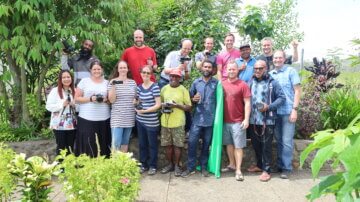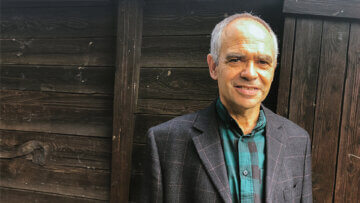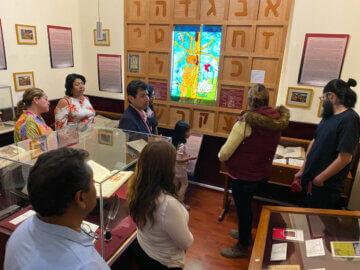Leadership Foundations: The Changing Global Context
Synopsis:
The leadership theories, traits and styles explored so far have mainly a Western association. This is to be expected because of the plethora of researchers located in the West, where leadership and management theories have been constructed for decades.
Most leadership principles are culturally bound, and become obstacles when applied cross-culturally. The prevalence of Western leadership models makes it problematic to define how leadership ought to work in a cross-cultural context.
Cross-cultural leadership should integrate intercultural thinking, which involves interdependency, supporting one another, and seeking unity through inclusion. This is similar to but different from multicultural thinking, which recognizes and respects the differences and uniqueness of each culture and adjusts accordingly. Both intercultural and multicultural thinking lead to respect for cultural differences, appreciation of common values, and negotiation through a fusion of ideas, as well as a willingness to adjust certain beliefs, customs and habits in the light of wiser and more fitting alternatives.
Leaders in a globalized context of the missio Dei must serve in a rapidly changing world – in social, cultural, economic, political and religious environments, and at local, national and global levels. The global context requires greater understanding of how to lead change, necessitating new ways of thinking and acting from what has been done in the past. This requires more than just understanding the big issues facing one’s context. Leaders seeking to follow God’s purposes and character must be rooted in an intimate relationship with the incarnate word, Jesus, who affirmed the place of contemplative prayer and reflection.
Full Article: Article 15 – Leadership Foundations: The Changing Global Context
The leadership theories, traits and styles explored so far have a Western association about them. This is to be expected because of the plethora of researchers located in the West where leadership and management theories have been constructed for decades. However, as noted by Martin Chemers, “organizational theories developed in the West, primarily in the United States, are not always applicable to other cultures” (1997:119).
Leading global organizations
Researchers have identified four types of organizations: 1) “ethnocentric corporations” that are “home country oriented.” They have a monocultural philosophy and find it difficult to communicate in different languages or in accepting cultural differences in the group; 2) “polycentric corporations” have quasi-independent subsidiaries in various locations in the home country and in various host countries. The host-country governments often influence how the organization must operate; 3) “regio-centric corporations” share common functions where the regional headquarters manages the regional plan, local research and development, public relations, and other matters. The world headquarters manages strategy, financing, selection of top-level management and defines the corporate culture; and 4) “geocentric corporations” create an integrated system worldwide while allowing for each part of the organization to make its own unique contribution (Harris, Moran & Moran 2004:26).
Globalization places increasing pressure on organizations to be more effective in leadership and management of human and other resources. There is also a need for groups to “draw their talent quickly from different functions, locations and organizations” (Duart & Snyder 2001:3). The virtual world of interconnectivity creates greater collaboration across more diverse contexts with groups of people. They must understand how to bring out the best in the group which is spread “across functional areas and national cultures.” They need to know how to harness technology as their “primary means of communicating and collaborating” (Duart & Snyder 2001:4).
In order to be successful in the globally networked environment, leaders need to adjust their skills or acquire new skills and they must: 1) remain focused on the mission not the organization while forgoing areas “such as control over program implementation, funding, and recognition”; 2) exhibit trust within the network rather than trying to control it. They share the same values and do not have to “try to manage for every contingency”; and 3) lead their organizations “within a constellation of equal, interconnected partners, rather than as hubs at the center of their nonprofit universes.” This enables them to “develop more holistic, coordinated, and realistic solutions to social issues than traditional nonprofit hubs” (Wei-Skillern & Marciano 2008:40-41).
The following chart summarizes points made by Harris, Moran & Moran on the critical competencies needed by one who leads in a cross-cultural context.
Leading a multi-cultural organization requires flexibility as leaders shift their approach according to the context. Groups within such organizations must be more flexible since they are increasingly multi-cultural themselves and work under leaders who may have different cultural expectations of the group (Plueddemann 2009:152). Leaders, too, have to adjust since groups are also “increasingly self-managed” (Vecchio 1997:412). Consequently in a complex globalized multi-cultural context, the leader needs to connect “the dots between isolated pieces of information” (Gibbs 2005:43) by collaborating with people who have the collective resources to deal with the challenge. The leader needs to learn how to “think in a lateral rather than linear mode [to] work across disciplines” (Gibbs 2005:43). Leaders also need to experiment with structures that are flat and decentralized so they can respond quickly to new opportunities and challenges.
The effects of culture on leadership styles
Geert Hofstede, well known for his research on how culture affects management theories, defines culture as “the collective programming of the mind which distinguishes one group or category of people from another” (Vecchio 1997:477). Culture affects leadership on a number of levels, as the following chart demonstrates.
How power is used in various cultures is important and includes how people view power in leadership and what forms are legitimate and desired. According to Hofstede there are four dimensions that affect the use of power in a culture:
- “Power distance” is the degree to which power in an organization is unequally distributed with the objective that everyone in the group has their rightful place. Societies with high power-distance assume that the leader has more authority, respect and status symbols. The leader is assumed to make unilateral decisions that are obeyed without question. This value is common in the East and West Asian, Arabian, and Latin American contexts. In a low power-distance culture people “prefer a consultative, participative or democratic decision-making style” (Plueddemann 2009:95). This is found in most Western cultures because equality is a positive value. However, in reality “all societies are unequal [and] some are more unequal than others” (Vecchio 1997:477).
- “Uncertainty avoidance” is the extent to which a group prefers structured over unstructured situations. It is the degree to which people feel threatened by ambiguous situations. In a structured society there are clear rules for behaviour. In a less structured society where uncertainty avoidance is strong, what is different is considered dangerous. In societies with weak uncertainty avoidance, what is different is interesting or worth exploring (Vecchio 1997:478).
- “Individualism versus collectivism”: The former is a loosely knit social framework in which people take care of themselves and their families. Individualistic cultures include the U.S., U.K., Nordic and Germanic regions, in which identity is centred in the individual and their achievements. Accordingly every person has the right to develop their own initiative and independence. On the other hand with collectivism there is a close knit social context where people distinguish between in-groups and out-groups. They assume their in-group (i.e. relatives or clan) will look after them and in exchange they owe absolute loyalty to their group. Collectivistic societies value harmony and are especially found in the Latin American and East Asia (Vecchio 1997:478).
- “Masculinity versus Femininity”: The former refers to values in society that are stereotypically roles for men (Chemers 1997:118). Such societies prize assertiveness, money and material things and are less motivated to care for others. These are found in Japan and Anglo, Germanic and Latin American contexts because “ambition and achievement are desirable; and big and fast is good” (Chemers 1997:118). Femininity is associated with women’s roles and gentle values like “quality of life, maintaining warm personal relationships, service, care for the weak, and solidarity” (Vecchio 1997:478). High femininity societies include the Nordic region and Thailand where service to others is emphasized and the small and slow are valued (Chemers (1997:118).
Leading in cross-cultural contexts
Most leadership principles are culturally bound and become obstacles when applied cross-culturally. The prevalence of Western leadership models makes it problematic to define how leadership should work in a cross-cultural context. Nevertheless, theorists have sought to identify characteristics that enable leaders to be more effective in cross-cultural situations.
A crucial element is learning to build trust, although this is admittedly complex when cultural views clash. Sherwood Lingenfelter (2008:21) says that leading in cross-cultural situations requires the leader to inspire and build trust amongst people of different cultures so they willingly and joyfully serve together. This view turns on its head any notion of leadership being concerned simply about achieving a task, including attaining a particular vision, meeting goals and being productive.
A crucial element is learning to build trust.
Leading cross-culturally is not achieved through structures or social processes alone, but is influenced by how a leader lives, respects people, accepts differences, and engages people in ways that inspire trust. This is especially significant for multicultural teams who come from different cultures and nationalities, common to the global context. However, even when individuals from various cultural contexts may be in the same place at the same time, “this does not mean that anyone is actually sharing their ‘world’.” It could be just “a peaceful co-existence [with] minimal cooperation” for the sake of something quite basic (such as using public transportation in a city) (Bevans & Schroeder 2011:72).
The goal of leading across cultures is to achieve a “mutually enriching and challenging relationship of understanding, acceptance, and care” (Bevans & Schroeder 2011:72) which leads to deeper relationship with people from different cultures. This is “a mutual multidirectional movement between cultures” (Bevans & Schroeder 2011:72) which is indeed what intercultural implies.
Cross-cultural leadership should also integrate intercultural thinking.
Cross-cultural leadership should also integrate intercultural thinking. This is similar to but also different from multicultural thinking. Multicultural interaction recognizes and respects the differences and uniqueness of each culture and adjusts accordingly. Intercultural thinking involves interdependency, supporting one another, and seeking unity through inclusion. Although it respects cultural differences, it appreciates common values by negotiating through a fusion of ideas. There must also be a willingness to adjust certain beliefs, customs and habits in the light of wiser and more fitting alternatives. Leaders in this type of context know how to draw out unspoken feelings and anxieties which act as “a powerful, dominating control mechanism” (Roxburgh & Romanuk 2006:98). When someone is enabled to speak about an experience or a feeling this can lead to deeper relationships and transformation of the individual and community.
The specific context of Korean leadership
Leadership in the South Korean context is of interest because within a relatively short amount of time the country has become the second largest missionary sending nation, passing the U.K. This missionary movement is similar in its zeal to the U.S. evangelical mission movement of the early 20th century. As a result, South Korea has produced an abundance of mission leaders who have a “strong spiritual dynamic” (Bonk 2011:14).
Korean culture is influenced by paying proper respect (called chongyong). It is a high power-distance context without roots from Western culture, but rather it is influenced by traditional Confucian principles that continue to subconsciously shape every relationship. Koreans “show exceptional respect toward their parents, teachers and superiors who have legitimate authority over them” (De Mente 2012:67). Leaders therefore assume they will always be esteemed by their followers who are to bow “at all appropriate times” and address their leaders with their titles and other language of honour (De Mente 2012:67).
This cultural respect of elders and those in authority also affects Christian Korean organizations and it is common for these to be led by ordained ministers. This is significant because “ordained ministers are ascribed absolute spiritual authority over their congregation or organization” (Bonk 2011:189). However, this can lead to an environment that lacks accountability to any kind of governing body.
The leader as a reflective practitioner
Leaders in a globalized context of the missio Dei must serve in a rapidly changing world – in social, cultural, economic, political and religious environments, and at local, national and global levels. Christian leaders serve under God’s purposes and character which should flow out of their intimate relationship with the Triune God and his word. One could call this ‘leading at a higher level’. Consequently, leaders must take time to reflect on the contexts in which they lead.
Leaders must take time to reflect on the contexts in which they lead.
Leaders in the missio Dei, according to William Taylor, should learn to be reflective practitioners which he defines as, “women and men of both action and study; rooted in the Word of God and the church of Christ; passionately obedient to the fullness of the Great Commandment and Great Commission; globalized in their perspective; yet faithful citizens of their own cultures” (2000:1).
The reflective practitioner’s goal is to demonstrate an integrated nature – action and study that is local and global, yet Christ-centred and biblical. A biblical example is the Apostle Paul who functioned as “evangelist, missionary, church planter, team leader, strategist, missiologist, theologian, and author” (Taylor 2000:520). The Apostle demonstrates a combination of action and reflection, as well as study and strategy.
Leading at a higher level by being a reflective practitioner requires more than just understanding the big issues facing one’s context. Such leaders have to be rooted in the permanent, intimate relationship with the incarnate word, Jesus, who affirmed the place of contemplative prayer and reflection. Henri Nouwen states that “Christian leaders have to learn to listen again and again to the voice of love and to find there the wisdom and courage to address whatever issue presents itself to them” (1989:45). Courage is critical for leaders because it enables them to overcome adversity by standing firm for what they believe, admitting their mistakes and successfully battling inner turmoil or external opposition (Gibbs 2005:136).
Courage is critical for leaders because it enables them to overcome adversity....
John Dewey popularized the concept of reflective practitioners in the educational field. He believed that reflective thinking should be active and persistent, considering carefully any assumptions about knowledge to make sure there were grounds to support it. The reflective practitioner critically analyses practice as they respond to every day practices through “a reflective lens” and therefore they need to “create time to enable reflectivity to take place and for new ideas to emerge” (Van Wynen 2008:3).
Leaders who are reflective practitioners are also lifelong learners who are continually studying global and local contexts in order to identify opportunities and challenges. They are continually growing in “self-knowledge and awareness” (REC 2005:37) while developing their leadership capacities. They are growing in their awareness of cultural and social factors that are affecting their context. This requires two kinds of interconnected skills: 1) learning to ask new kinds of questions in order to “see beneath the surface… to deeper levels of meaning”; and 2) empowering people by letting the biblical narratives “ask their own questions” of the context (Roxburgh & Romanuk 2006:176).
Leading change in the global context
The global context requires greater understanding of how to lead change. Alan Roxburgh and Fred Romanuk describe two kinds of change – discontinuous and continuous. Discontinuous change is “disruptive and unanticipated; it creates situations that challenge our assumptions [and it] is dominant in periods of history that transform the culture forever, tipping it into something new” (2006:7). In such situations “leaders suddenly find that the skills and capacities in which they were trained are of little use in addressing new circumstances (Roxburgh & Romanuk 2006:8). Therefore working harder with the same skills will not make a difference because, in reality, new skills are required.
In contrast, continuous change assumes a situation is more predictable and that change is an outcome of what has gone before and can be “expected, anticipated and managed” (Roxburgh & Romanuk 2006:7). Contexts of discontinuous change can assume that the greatest obstacle facing mature leaders might not be in “learning new insights and skills but in unlearning what they consider to be tried and true” (Gibbs 2005:25).
In general, leading change requires new ways of thinking and acting from what has been done in the past. This calls for a mind-set that is receptive to recognizing the need for ongoing change. This makes it easier to also recognize the need for, or appearance of, disruptive or discontinuous change. Otherwise leaders may get caught in “a false sense of security” (Gibbs 2005:35).
The latest
View all articles
03/2024 Pacific: Papua New Guinea
Informing, teaching, inspiring: PNG workshop teaches video storytelling for language communities
PNG workshop teaches video storytelling for language communities
Read more
02/2024 Global
Looking ahead at 2024
As the year unfolds, we marvel at the work of God in our rapidly changing world. And, we look forward to a number of gatherings and conversations intended to draw us together.
Read more
01/2024 Americas
Telling the Bible's Story
It may come as a surprise that a museum is among the Wycliffe Global Alliance organisations.
Read more

